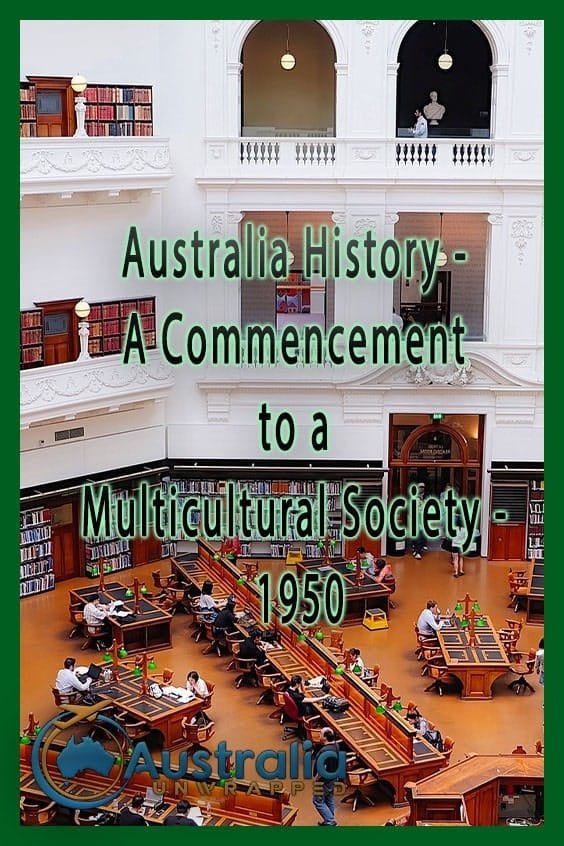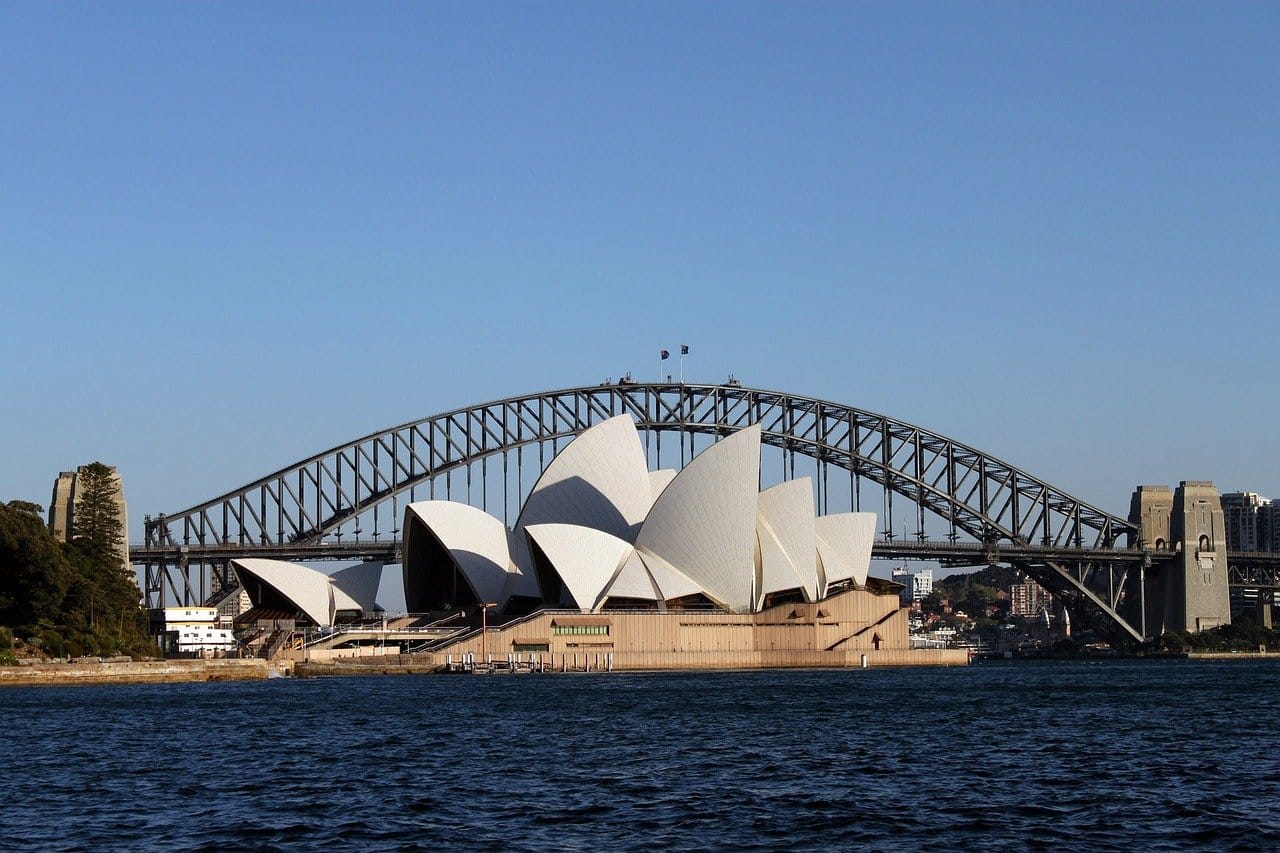Australia’s History – Strive Towards a Multicultural Society in 1950
After laying a foundation for a nation in 1901, the Australian federal government implemented several changes in the country’s foreign program in the shape of White Australia Policy. But soon in the 1950s Australians realised the importance of multiculturalism and foreign immigration. After World War II, when the entire world was finally taking a step towards peace and progress most of the countries like Indonesia, Malaysia, and Singapore emerged as an independent nation.
Pakistan and India overwhelm the British empowerment, China declared itself as the People’s Republic of China, Australia also realised that the time arrived where they should think about an independent development of the country.
The history of 1950s Australia – a commencement to a multicultural society plays a major role in the country’s past and its way to growth and advancement.
1. Multiculturalism in Australia – before the Foundation of Federation
Australia had been a multicultural nation since its prior days. Even before the Europeans established their dominancy, over 200 original aboriginal tribes inhabited the lands of Australia. All these tribes had their cultural values, traditions, languages, social and religious principles that made Australia a land of multiculturalism and multinationalism.
I mentioned Australia as a land of multinationalism because during the time the United Kingdom, China, Ireland, and Dutch settlers colonised Australia. This was the condition of Australia before 1901 when the country was a seat of distinct groups of British settlers.
Read More:
Australian History before and after 1901
2. Australia After Federation – The White Australia Policy
After the 1901 Foundation of the Federation, they passed restrictive immigration policy as per the Immigration Restriction Act of 1901 under the supervision and orders of the national government of Edmund Barton.
The principle subject of the White Australia Policy was to restrict the immigration of all non-Europeans (primarily the Chinese, Pacific Islanders, and other Asians) to Australia.
The sole purpose of this policy was to establish a complete Anglo-Celtic Australian society, where the British cultural and ethnic identity of the Australian nation is preserved.
3. The Need to Establish a Better Economy – A Shilly-Shally Step to Multiculturalism
The White Australia Policy caused a downfall to the country’s economy. As the country was running out of workers and the European immigrants could not fulfil this shortage of workers, the government devised a plan.
At first, they were reluctant to fully abolish the policy and tried to stay as close to the arrangements as possible. The Minister of Immigration of those times Arthur Calwell announced several policies to attract the European immigrants to help maintain the economic condition of the state. Still, the foremost priority for immigrants was the British people after them they preferred the other Europeans like Germans and Dutch. To accommodate the white European immigrants they even expelled some Chinese workers working in their country, even if they married an Australian. It gave the immigrants the lowest-paid jobs.
4. Calwell’s “New Australians”- Another Step to Multiculturalism
In the years between 1945, 1946, and 1947, around 1 million immigrants migrated to 10 million by 1959. This happened because of an agreement made between Calwell and the United Nations Refugee Organisation. It states that the country has to take a major population of people left homeless, hopeless and had lost their countries during world war II.
As this was a matter of concern and became contrary to the country’s White Australia policy, they accepted refugees from Balkan, Macedonia, and Yugoslavia. They had different religious, cultural, ethical values and principles. The country could not grow their economy, sustain or even defend it until the situation left them with no other option besides this. The people called them as “wogs” (a slang for foreigners) and Calwell named them as “New Australians”.
5. Gough Whitlam’s Smart and Bold Move- Declaration of Australia as a Multicultural Society
The influx of many South European immigrants created chaos among the supporters of White Australia Policy, and the country faced several years of racism and discrimination. But the beginning of the 1970s brings a positive change in society when Prime Minister Gough Whitlam handled the controversial situation directly and efficiently. Whitlam addressed it for the first time in Australian history that racism and cast-based immigration practices are not the present and future of Australia, he announced and described Australia as a land of multiculturalism and a multicultural nation.
In many of his speeches, he made this very clear that he wants Australian society to progress as a family based on religion, culture, ethics, and traditions does not matter. It made many new policies to welcome the immigrants and to protect their rights.
6. Multiculturalism after Whitlam
After Whitlam, the dream of a multicultural nation becomes controversial, and again the issues of racism and cast discrimination dominated the minds. Multiculturalism received both admiration and criticism.
Many people agreed on the terms that the new people coming to Australia should follow the culture and ethical code of Australia. In 1988, John Howard and his party launched even an Australia Policy, that speaks for the elimination of multiculturalism causing a decrease rate in Asian migration to the country. His ideas were to opt for a “common Australian culture” every inhabitant of Australia should follow.
After Howard, his successors changed multiculturalism to cultural diversity and said that immigrants should support the Australian economy and those who are skilled and beneficial are most welcome.
7. Present-Day Australia – A True Multicultural Nation or a Fake One?
The matter of multiculturalism remains complexed as to the world it appears as a multicultural nation, with so many people from different nations, speaking unique languages and having many cultures and ethics. What about the basic human rights, the racial discriminations based on caste, colour, religion, and language faced by people at several aspects of life?
At present, the only department in Australia that holds the word “multiculturalism” is the Australian Multicultural Council that has no other function except for advising the government on social, cultural, and shared values. No politician speaks of multiculturalism openly and hesitates to talk about it.
Conclusion
In Australia, multiculturalism is now a composition of the country’s immigration policies. The sense of multiculturalism in Australia remains deep-rooted as we reflect it in Australia’s aboriginal history that depicts how several hundreds of tribes having various cultures inhabited the land.
References
1. https://www.smh.com.au/politics/federal/the-way-we-were-quiet-maybe-but-certainly-not-dull-20110425-1du0l.html
2. https://www.britannica.com/place/Australia/The-advent-of-multicultural-society
3. https://australia-explained.com.au/history/multiculturalism
Also Enjoy:
Amazing Discoveries in the Australian War Museum

Main Image Source : Pixabay
Also See : 7 Australian Actors Who Have Achieved Cult Status in Hollywood












